Painting Cinder Block Walls in a Basement | Or re-paint them
This post may contain affiliate links. Please read our disclosure policy.
Thinking of painting cinder block walls in your basement? This process works for both unpainted blocks or if you want to repaint your cinder block walls.
A basement is a valuable space in any home, with its year-round cool climate and easy access from both indoors and outdoors.
But whether you use it as storage for your excess pantry items or as a family hangout, you need to maintain it regularly to prevent moisture damage.
Your basement will either have a concrete foundation or cinder block foundation. By painting the walls or foundation, you increase the appeal of the space, but also it improves the moisture control from the wall.
Concrete is a porous material that can absorb water from the ground and transfer to the basement through the foundation. By using a waterproofing paint, you prevent some of this transfer from happening.
Let me share how to paint cinder block walls in a basement or concrete to help you waterproof your basement.

This tutorial is for a cinder block foundation because this is the type of walls we have in our basement, but this works for a concrete wall too. Also, our walls were painted before, but they were starting to flake, and we wanted to make sure they were waterproofed before finishing the space.
Disclosure: This post contains some affiliate links or referral links for your convenience. It is a way for this site to earn advertising commissions by advertising or linking to specific products and/or services. Click here to read my full disclosure policy.
Painting Cinder block walls in a basement
MATERIALS:
TOOLS:
- paintbrush
- paint roller frame
- 1/2″ to 3/4″ nap roller
- step stool or ladder
- face mask
- safety glasses
- painter’s tool
- wire brush
- shop-vac
STEP 1 – How to prepare a cinder block wall for painting
With every project, there is always prep work, and this is an essential step to give you the finish you want. But before starting, I put on my mask and glasses – safety first!
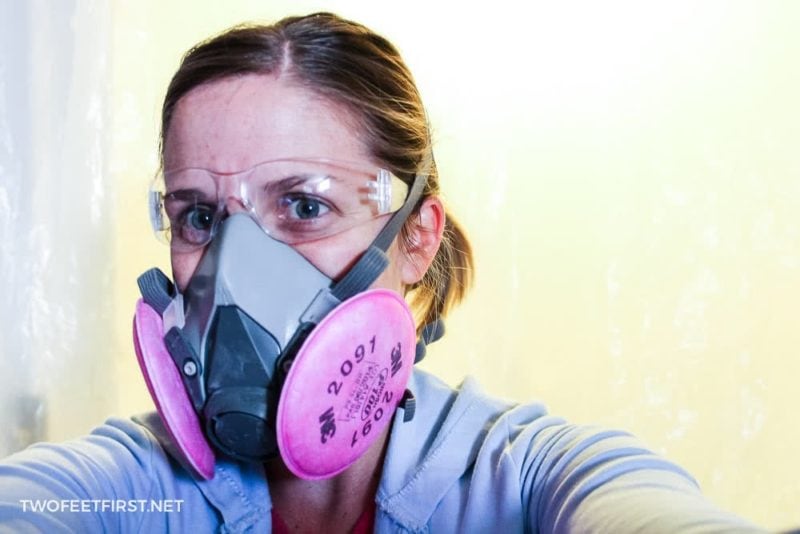
Start by scraping off all dirt, loose grit in cracks, and (if you’re repainting), the old flaking paint, with a painter’s tool and a wire brush. Use a shop-vac to vacuum up the scraped off material.

After, you will use hydraulic cement to patch any holes or cracks where water could seep in. Follow the instructions for the hydraulic cement, or if you want some extra help, see how to waterproof cracks in a foundation.

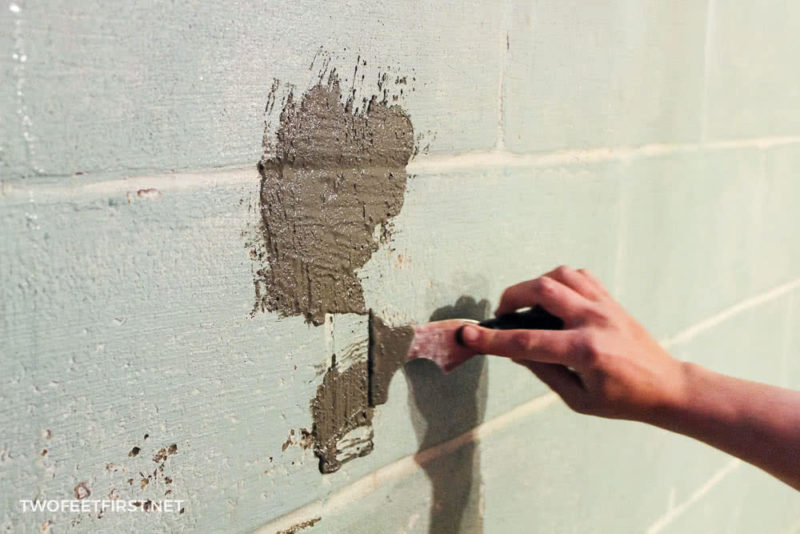
Once the cement has dried, it’s time to clean the walls. Use a shop-vac again to vacuum up any loose materials.
Make sure to remove Efflorescence (a white, powdery, crystal-like deposit) by using Drylok Etch or muriatic acid to clean the area. Follow the manufacturer’s directions.
Then, using a mild detergent, clean the walls to remove any extra dirt or residue.
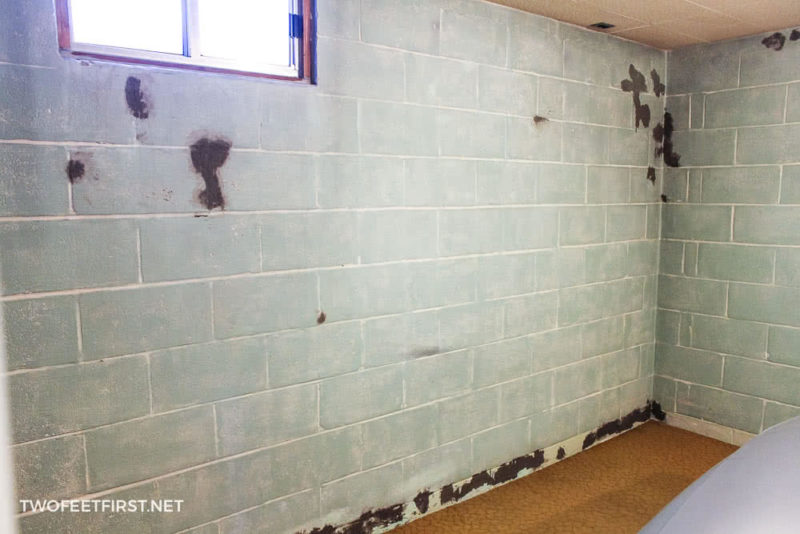
STEP 2 – Paint cinder block with paint
Now you’re ready for paint! Choose carefully because the type of paint you use will make a difference in waterproofing your walls. I have used two different types and I would recommend using Drylok.
SIDE NOTE: Drylok is tint-able, so you can color it!
Apply the paint according to the manufacturer’s instructions, but here are some basic guidelines.
Stir the paint thoroughly before and during painting.
TIP: Use a drop cloth to protect the floor from paint.
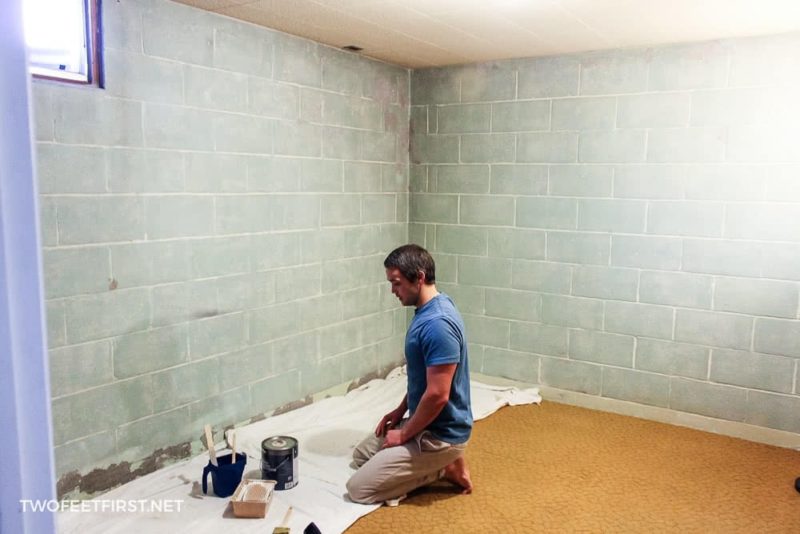
Apply the first coat of paint by cutting in around the edges of the wall with a paintbrush and also between each joint of the cinder block. You want to paint the joints with a paintbrush because it is challenging to paint with a roller, and every pore of the cinder block needs to be covered.
SIDE NOTE: You could paint the whole wall with a paintbrush if you are worried about filling in each pore.

Next, use a high-quality 1/2″ to 3/4″ nap roller to paint the rest of the wall with paint. Again, you want to fill every pore and void on the wall’s surface with paint, so check that this is happening as you roll on the paint.
Let the paint dry according to its instructions. Then, you can apply a second coat the same way as the first coat (with a roller). Make sure you are covering any pores you missed with the first coat.
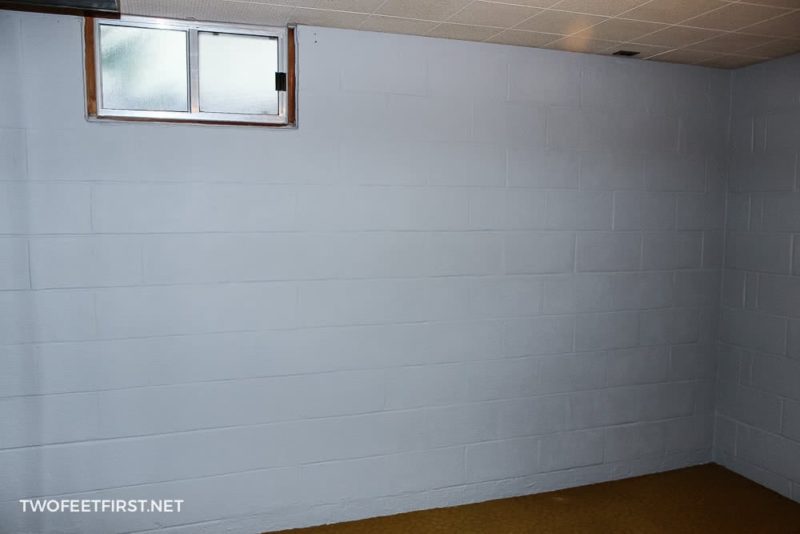
Allow the second (and final) coat to dry; then, confirm that the pores are each painted. If you happen to miss some, use a paintbrush to cover these areas; then, let it dry.

And that’s how you can paint (and waterproof) your cinder block interior walls.
Interested in more







Your pin was very helpful. I have been researching this topic for a while. My time was wasted, only thing I found was a lot of company’s to do the work. Like you my room is small and the problem only affects a small area and only in heavy rain storms. Thank You for a simple to the point post. Was so helpful. Thank You again.
Hi, Susan! I am so sorry you had so much trouble finding the info you needed but I am glad you found it here. The cement is the key to fixing water problems. Best of luck and thanks for stopping by!!